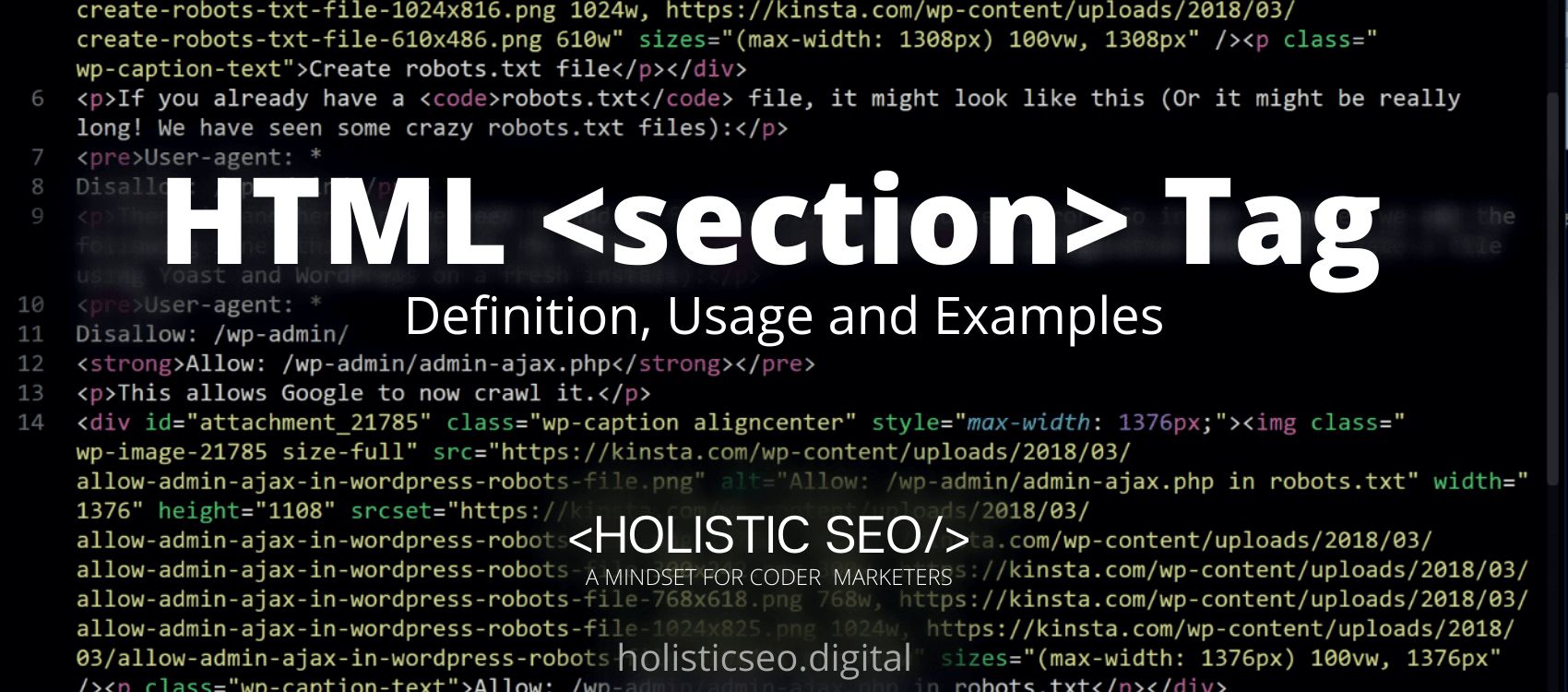The <section> HTML Tag indicates a generic standalone section of a document that lacks a more specific semantic element. With very few exceptions, sections should also have a heading. The developer should use the <section> HTML Tag if no more specific element exists to represent it. Each HTML Tag containing a section should be labeled. The <section> HTML Tag is part of the style and semantic tags category in HTML Element Reference. The attributes of the <section> HTML tag are global attributes and event attributes.
<section> code block example to learn how it works is given below.
<section>
Content
</section>The second example usage of the “<section>” code block example is given below.
<section>
<h2>Facebook</h2>
<p>Facebook is a social networking website where users can create profiles, share information about themselves such as photos and quotes, and respond to or link to the information shared by others.</p>
</section>What is <section> HTML Tag?
The <section> HTML Tag indicates a section of a document, such as a chapter, a header, or a footer. The <section> HTML Tag categorizes the content by section and subsection. When two headers or footers or any other section of a document is required, the <section> HTML Tag is used. The <section> HTML Tag was used to categorize the generic block of related content. The <section> HTML Tag’s primary advantage is that it is a semantic tag, which means that it describes its meaning to both the browser and the developer.
How to Use <section> HTML Tag?
To use the <section> HTML Tag, the web developer should write the section’s content between the <section> and </section> HTML Tags. This tag is used if no more specific element exists to represent it. Each <section> HTML Tag should be labeled.
Example Usage of <section> HTML Tag?
The following example of usage of <section> HTML Tag is given below.
<section>
<h2>Instagram</h2>
<p>Instagram is a social networking service for sharing photos and videos founded by Kevin Systrom and Mike Krieger in the United States.</p>
</section>What are the Attributes of <section> HTML Tag?
There are multiple attributes for the <section> HTML Tag. The following attributes are listed below.
- Global Attributes: The <section> HTML tag supports Global Attributes. All HTML elements, even those not specified in the standard, can have global attributes. This means that any non-standard elements must nevertheless allow certain characteristics, even if using such elements makes the content non-HTML5 compliant.
- Event Attributes: The <section> HTML tag supports Event Attributes. The Event Attributes always have a name that begins with “on” and is followed by the name of the event for which it is intended. They specify a script to run when an event of the defined type is dispatched to the element with the specified attributes.
What are the Default CSS Settings for <section> HTML Tag?
The following is the Default CSS Setting for the <section> HTML Tag.
hgroup > h1, h2 {
margin: 0;
}What are the Related other HTML Tags to <section>?
The other related HTML Tags to <section> HTML Tag are listed below.
- <summary> HTML Tag: The <summary> HTML Tag is related to <section> HTML Tag because they are both style and semantic tags. The <summary> HTML Tag specifies a summary, caption, or legend for the disclosure box of a <details> HTML Tag.
- <article> HTML Tag: The <article> HTML Tag is related to <section> HTML Tag because they are both style and semantic tags. The <article> HTML Tag. The <article> HTML Tag specifies a self-contained composition in a document, page, application, or site that is meant to be distributable or reusable independently.
- <header> HTML Tag: The <header> HTML Tag is related to <section> HTML Tag because they are both flow content. The <header> HTML Tag represents introductory material, which is often a series of introductory or navigational aids.
- <div> HTML Tag: The <div> HTML Tag is related to <section> HTML Tag because they are both style and semantic tags. The <div> HTML Tag acts as a container for flow content. It has no influence on the text or layout unless and until it is styled with CSS.
- 48 Online Shopping and Consumer Behavior Statistics, Facts and Trends - August 22, 2023
- B2B Marketing Statistics - August 22, 2023
- 38 Podcast Statistics, Facts, and Trends - August 22, 2023


